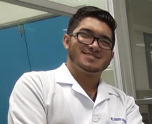Scientific Program

Leonardo Colorado Aguirre
Hospital IESS Los Ceibos, Ecuador
Title: MUCO/PIOCELE FOR PARANASAL SINUS
Biography:
Dr. Leonardo Colorado Aguirre is a Postgraduate doctor of the Otorhinolaryngology Service of the General Hospital of the North of Guayaquil Los Ceibos (IESS) – Teodoro Maldonado carbo Speciality Hospital (IESS) – Francisco Icaza Bustamante Pediatric Hospital (MSP), Guayaquil. The area of knowledge includes care in the Emergency area, Inter consultations, Hospitalization, and Surgery of the Otorhinolaryngology Service.
Abstract
Introduction:
Mucocele is a chronic benign pseudocyst lesion, lined with paranasal sinus mucosa, with aseptic mucus within a mucoperiosteal lined cavity. It grows slowly and has a tendency to expand giving rise to a mass effect on the surrounding structures, which can result in erosion and bone remodeling. It results in the obstruction of a sinus ostium or a compartmentalized portion of a sinus. It is most common in adults: in the 3rd -4th decade of life, with a slight predominance in males. It occurs in all age groups.
Signs and symptoms:
The most common signs/ symptoms are greater (> 90%) ophthalmic. Frontal mucocele: protrusion of the forehead, proptosis, diplopia, mass in the superomedial orbit, headache, orbital pain, unilateral nasal obstruction (mucocele invades the nasal cavity). Ethmoid mucocele: proptosis, blurred vision± visual loss, periorbital edema. Maxillary mucocele: Nasal obstruction (medial projection), rhinorrhea. Sphenoid mucocele: visual loss, oculomotor paralysis (compression of the optic pathway), headache. If there is facial pain, consider MUCOPIOCELE.
Diagnosis:
Nasal Endoscopy, SPN TC, SPN NMR, Culture, Biopsy
Treatment:
Surgical healing is the goal and the expected result when there is a mucocele.
Conclusion:
Preoperative study of SPN CT regarding the extent of an ethmoidal-orbital-frontal mucocele is essential, in conjunction with diagnostic nasal endoscopy, for an uneventful surgery and to minimize the chances of recurrence. It must be evaluated in terms of ethmoidal pneumatization, which is highly individualistic and therefore predicts the unpredictability of its extent. Comparative imaging studies of the anatomical landmarks are vital on the contralateral (unaffected) side.
- General ENT
- Otology
- Rhinology and Sinusitis
- Laryngology
- Head & Neck Surgery
- Tonsillitis
- Speech and Swallowing disorders
- Various Sleep disorders
- Allergy & Immunology
- Pediatric Otolaryngology
- Facial Plastic Surgery
- Diagnostic Approaches in Otorhinolaryngology

